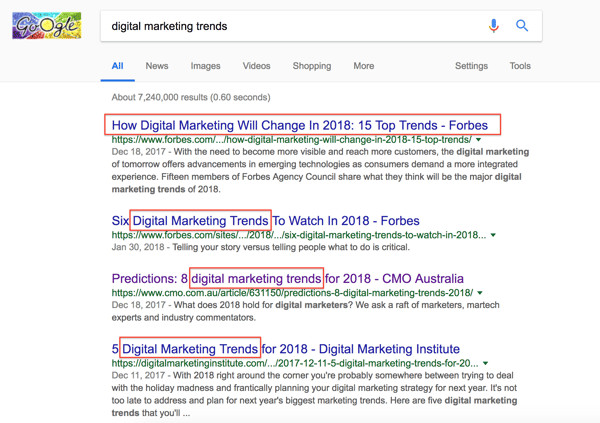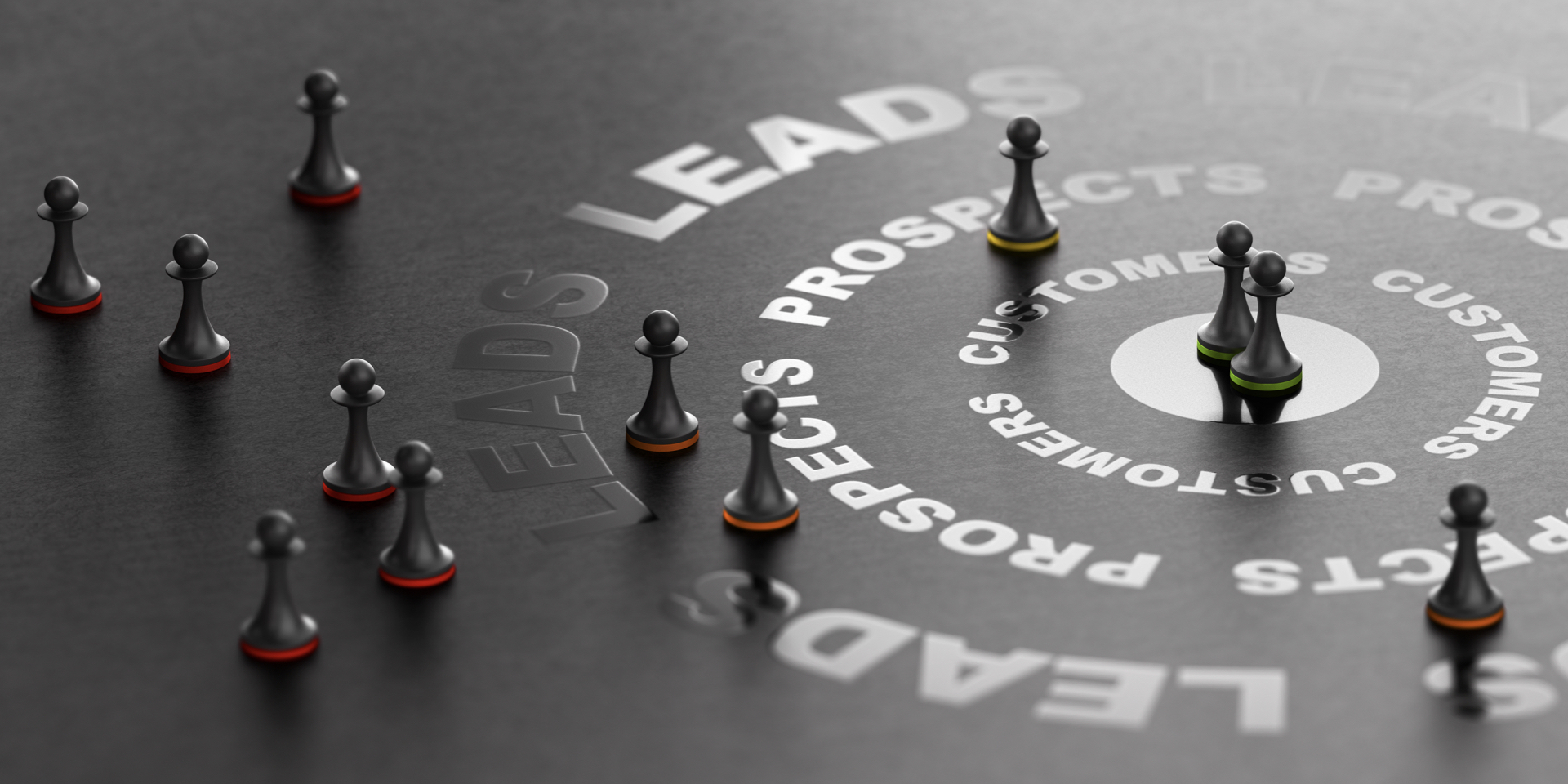Marketers are facing a dilemma today. On one hand, it’s becoming clear that creating content is not only an effective way to raise publicity for their companies, but it’s also essential to do so. On the other hand, so many companies are using content that consumers have become overexposed to.
The typical consumer sees hundreds of articles, blog posts, videos, and other forms of content per day and only manage to fully consume or remember a small fraction of them.
Unless your content marketing strategy can stand out from the rest, there’s no way to convert viewers and readers to consumers.
The content marketing funnel offers a solution to this publicity dilemma.
A systematic strategy for creating and coordinating content of all types, the funnel helps you release content that is highly likely to catch the eyes and interest of your audience and target it to those who are most likely to become your customers.
It involves taking advantage of quality keywords, location targeting, and a careful arrangement of different types of content that builds towards a sale.
Whether you’re selling to individuals, businesses, or a combination of the two, this strategy is sure to attract all the attention and interest you need for long-term success.
Download the content marketing funnel template to get started today.
I. The Top of the Funnel (TOFU)
The first stage in the content marketing funnel is Awareness. You can’t sell to potential customers unless they know that you exist, so it’s essential to create the kind of content that educates them about your brand and the broader industry.
This type of content is aimed at a wide range of different individuals and businesses, including those looking to learn more, find answers to difficult questions, solve problems, obtain data, or get others’ opinions and insights.
When designing content for the top of the funnel, your goal should always be to build awareness. But it’s important to recognise your customers’ goals as well.
At this stage, the consumers or businesses you’re targeting will likely have some problem that they are consciously or subconsciously aware of. By naming that problem and offering your products or services as viable solutions, you make consumers aware of your brand while simultaneously giving them a reason to consider becoming your customers.
Once you’ve defined what problem your potential customers face, your next step is to choose the type of content that can best communicate your solution to them. Depending on what you’re selling, this may be one of the following:
- Checklist. One of the simplest and quickest ways to introduce customers to a problem and solution, checklists involve listing experiences or challenges that likely customers have faced. This method appeals to customers who are aware of various individual issues they’re having but haven’t evaluated all those issues and identified an underlying problem.
- Video. Videos combine audio and visual content to introduce customers to a problem and explain a viable solution in short order. This content works for individual customers who have limited time on their hands.
- Guide. “How to” guides name the problem at the beginning and then walk customers through the process of resolving it, referencing your product or service as a key part of the solution. This content is suited to customers who already know what their problem is but aren’t sure how to address it.
- Tip Sheet. A more free-form version of a guide, tip sheets provide customers with alternative options to solving a problem but don’t require them to adopt all of those tips or do them in any particular order. This appeals to customers who want to make quick, simple improvements.
- White Paper. White papers are reports that provide complex but concise information on an issue as well as a detailed guide on how your organisation seeks to address that issue. This type of content is ideal if you’re marketing to other companies or to individuals who are skilled professionals with expertise that relates directly to your company.
- Ebook. An online book that is typically a few hundred pages in length or less, ebooks provide the greatest amount of detail about the problem and your solution. Both individual customers and businesses may be interested in ebooks. They are ideal for products that customers typically take a long time to evaluate before they buy.
- Kit. Kits provide your target audience with both information and resources to solve their problems. They work best for B2B customers who have a good sense of what the problem is but worry they may not be prepared to address it.
- Educational Webinar. An audio or video recording of a speech or conversation, a webinar provides a highly detailed window into both the problem and the solution. This content is ideal for business customers who want to hear experts talk about an issue at length.
Top-of-the-Funnel Content Example
At Step Change, to engage and attract our target audience, we offer web visitors a complimentary 65-page ebook about how the age-old concept of archetypes power brands to make them engaging and memorable to their audience. It offers marketers and business leaders inspiration on how to go about their own brand personality and messaging using brand archetypes as their anchor.

Having chosen the ideal form of content and created it, you need to get a sense of how effectively it is bringing in customers. There are a number of different metrics you can use to measure content success, including:
1. Shares
The more people share a piece of content on social media, the more effective it is at reaching and engaging the public. The best strategy for encouraging shares depends on what medium you’re using.
To get shares on Facebook, for example, you need to keep your content between 2,000 and 2,500 words, or for videos, between 4 and 4.5 minutes in length.
This insightful chart from Kissmetrics reflects the relationship between a blog post’s word count and the average number of shares.

Here’s a chart that shows the relationship between video length and the number of shares.

By contrast, on LinkedIn, you should use written content between 3,500 and 4,000 words in length.

Tweets get the most shares if they’re between 45 and 50 characters in length.
And for Pinterest posts, you’ll want to opt for infographics and other content that combines images with brief dispersed written descriptions.
2. SEO
If you want to capture high-quality leads and potential customers, you need to publish content that’s geared around the type of search queries that are asked at the Awareness stage.
SEO, or search engine optimisation, is the art of writing your content so it appears at the top of search results. This involves including relevant, targeted keywords, which you can identify with tools like Keyword Planner, Answer the Public, Ubersuggest, Infinite Google Suggest, Keyword.io.
For the top of the funnel, you may want to opt for longer keywords and phrases, which often take the form of a question; answering common questions can also help you get more traction.

3. Engagement
Engagement is a measure of how interested customers are in your content and how much time and effort they put into absorbing and understanding it.
For written content, you can measure engagement by tracking how far down customers typically scroll in an article or if they’ve liked, shared, or commented on the post.
For videos, you can track the percentage of customers who watch it to the very end.
Comments are also a valuable measure of engagement.
If customers take the time to comment on your content, it means they’re interested enough that they want to make their opinion known.
Finally, with the help of conversion tracking, you can see what percentage of consumers go from viewing your content to trying your product, signing up for a mailing list, or taking some other action that makes them likely to become customers.
4. Page Views
The simplest way of measuring content effectiveness, this refers to the number of people who have loaded the page where you posted the content.
It gives you a good idea of the number of people who are seeing your content, though it doesn’t necessarily indicate whether they’re interested in it or remember any of it.
Page views can also be somewhat misleading as the same person can visit a page multiple times, leading you to believe that multiple people have viewed it.
5. Clicks
These tell you the number of times someone has clicked on a link to your content from search results, ads, or some other source. The more enticing your headlines are, the more clicks you get.
Headlines are most likely to attract clicks if they are relevant to your product and industry, follow an aspirational theme, and contain specific information that viewers may find useful.
One of the famous tools we use to ensure that our headlines are geared towards driving traffic, shares, and search results is CoSchedule’s Headline Analyzer.
Another important aspect of clickable headlines is researching and incorporating keywords. If you use the words your target audience would likely use in searching for information would help them find your content.
Check out this very helpful post from CoSchedule to learn how to write headlines that get the best results.
If you’re not getting as many clicks as you’d like, you can use A/B testing to experiment with different headlines. This involves creating two separate headlines for the same article and seeing which one gets clicked on more.
6. Video Views
Like page views, video views tell you how many times people navigate to your videos. You can boost these views by posting videos on popular sites like YouTube, Netflix, and Facebook, as well as by making them as entertaining, informative, and relevant as possible.
II. The Middle of the Funnel (MOFU)
When leads move into the middle of the funnel, it means that you have successfully captured their attention this far. At this stage, they know they have a problem that they’re in need of answers and now their focus is to look for the best solution. They have now moved onto the next stage of the buyer’s journey: the Consideration stage.
Your goal should be to provide detailed, relevant information on solutions, all while positioning your company as the best place to get them.
Generally speaking, if your likely customers are businesses, you’ll need to devote more time and energy to this stage than if they are individuals. But for either prospect, you can choose from a wide variety of different content types, including:
- FAQs. This type of content anticipates questions that potential customers are likely to ask and answers them concisely but comprehensively.
- Demo Videos. These videos demonstrate your products or services, allowing customers to visualise them while learning what they do in detail.
- Data Sheets. Ideal for business customers, this content offers detailed information on the outcomes and technical parameters of what you’re offering.
- Samples and Free Trials. If possible, given what you’re offering, you can offer potential customers a chance to use free samples of your products or try out your services. Content promoting these opportunities will be appealing to customers who are aware of their problems and interested in the solutions you offer, but wary of paying for anything that they haven’t experienced directly.
- Case Studies. If you lack the resources to let potential customers try your products or services directly, you can offer them case studies. These are written or video descriptions that show how your products have worked in the past.
- Product Webinars. These videos or audio recordings contain detailed discussions of how your products work and what they have done in the past. This offers the most detail of any content at this stage of the funnel. It is most likely to appeal to business clients and skilled professionals who have the expertise to understand such detailed evaluations.
Middle-of-the-Funnel Content Example
Molemap pioneered a program that detects melanoma earlier and more accurately. Potential customers who move through the middle of the funnel may have some questions regarding their packages and process. To effectively address these questions, MoleMap created an FAQ page on their website dedicated to answering common questions about their services.

While you should measure engagement at every stage of the funnel, it is particularly important in the middle.
Individuals and businesses who are engaged at this stage are seriously thinking about your product as a solution to their needs and challenges, making them far more likely to buy it.
Thus, it is critical that you measure engagement through:
1. Email Registration
Consumers and businesses that are engaged will want more information, leading them to register for your email mailing list. You need to keep track of how many new registrations you get, as well as whether anyone unsubscribes from the list.
You can encourage people to sign up by putting calls to action in your content that specifically mentions your email list.
Such calls to action are most effective if they are clear, are direct, and provide specific information on what people can expect if they register.
Here’s an example of a call to action from Digital Trends to build their email list. The first thing you’ll notice is the heading, which has some sense of urgency in it. It taps into people’s fear of missing out. The CTA also contains a tick box would-be subscribers can tick off to give permission for the company to send deals as well.

2. Blog Sign-Ups
Similar to email registration, this involves getting people to sign up for updates whenever you release a new blog post.
You can bring in more subscribers by including calls to action that encourage people to register. You can also offer subscribers early access to content, comment privileges, and other benefits.
Below is an example of Help Scout’s compelling yet simple call to sign up for blog updates. They made it clear that if readers subscribe, they will receive an email from Help Scout twice a week. Perhaps the most compelling bit of this CTA is the number of subscribers currently on their blog database, establishing their leadership in the industry.

3. Email Opens
Besides measuring the number of people who subscribe to your emails, pay attention to how many subscribers actually open them.
You can improve open rates by writing more engaging subject lines, addressing the recipient directly, and using your own name for the email address rather than your company’s name.
In fact, in a survey by Chadwick Martin Bailey, 64% of subscribers say they are likely to read your email because of who it’s from and 47% of email recipients open an email based on the subject line.
According to HubSpot’s own data, their top-performing email subject lines have one of these components:
- Urgency
- Curiosity
- Offers
- Personalisation
- Relevance and timeliness
- Name recognition
- Cool stories
4. Clicks
Along with open rates, track the number of subscribers who click on the links in the emails you send.
You can raise click rates by embedding more links in your emails, though be careful not to include too many — an excessive number of links looks spammy and will turn subscribers off.
5. Email Shares
The most engaged customers not only read your emails and click on the links, but forward them to others. Buffer explains in their article about the science of shareable content that people are most likely to share your content if they find it informative, inspiring, or entertaining. They may also share it if you include information that they believe will help others in some meaningful way.
Engagement is the key to getting people to see you not just as a source of information, but as a solution to their problems. Once potential customers are fully engaged, they are placed in the next stage of the buyer’s journey.
III. The Bottom of the Funnel (BOFU)
Even after they’re fully engaged with your brand, consumers and businesses may still need a push to become customers. It’s not hard to see why; people and companies are wary of handing over their money to an unfamiliar organisation and want to be sure you’re the right choice.
Your goal at this stage is to show customers that you have exactly what it takes to meet their needs while getting them to picture a specific product or service.
The most effective content for this final push includes:
- Testimonials. Either in video or written form, previous customers who were in similar situations can explain what you did for them. This gives your current leads a concrete sense of the benefits of choosing you.
- Detailed Case Studies. Case studies also examine past customers’ experiences, but they do so from an outsider’s perspective. You can use them to publish objective, in-depth information on how clients benefitted from what you have to offer.
- Product Comparisons. If customers are convinced they need the type of product you offer, you need only show them that you make it better than anyone else. Thus in an article or video, publish specifications on your product and those of the leading competitors, making it clear exactly how yours is superior.
- Product Literature. Besides comparing it to other products, you can publish ebooks and white papers that describe your product in detail. This is ideal for companies and professionals who want to get into the weeds of competing products, choosing one based on subtle, specific features.
- Demos. Video demos of your products offer the same benefit as product literature, but through a visual medium. Potential clients can thus more easily visualise themselves buying and using them.
- Consultations. Give business clients a chance to meet with a member of your team, who will review their specific needs and offer a tailored solution. If they agree to this, then by the end, they’ll be confident you understand them and can give them exactly what they need.
- Trial Offers. Potential customers have little reason to turn down a free trial, and once they get used to using your product, they’re likely to keep using it.
Using these and other content types and sales methods, you can motivate likely customers to make the leap.
Bottom-of-the-Funnel Content Example
SalesITV is an Australian company that provides a robust sales culture by inspiring and empowering sales managers to be better sales coached. Their bottom-of-the-funnel content encourages sales leaders to try their sales training for free.

To measure your success, pay attention to:
1. Conversions
Sales, paid subscriptions, and other conversions that provide direct revenue for your company are the most important outcome you can measure at this stage. Only if the number of conversions you get grows over time can you call your content marketing strategy successful.
To raise your number of conversions, include calls to action in your BOFU content, especially after product descriptions, product comparisons, and other literature that directly demonstrates the benefits of your wares or services.
The most effective calls to action offer concise but specific information on what customers will receive. Customers are far more likely to click on such a link if it says, “Start your free trial” or “Buy now and save 10%” than if it merely says “Click here.”
Check out this case study from Unbounce. Changing one word in the CTA of a B2B website generated a 38.26% increase in their conversions.

2. Acquisition Rates & Paths
Besides merely calculating the number of customers who convert, you have to determine how many people or businesses do this out of the total number who engaged with your content.
You should also determine which specific piece of content or combination of pieces contributed to this sale.
If a large number of customers watched a particular promotion video, signed up for your mailing list, and read a product description you sent them before buying your product, that suggests this mixture of content is an effective way to attract customers.
3. Acquisition Costs & Revenues
You must figure out how much you’re spending on content and how much money it’s bringing in.
To determine this, calculate the total monthly cost of your content marketing operations, including the costs of paying writers and editors, obtaining the necessary software, and all other elements. Then divide this by the total number of customers you bring in each month; this will tell you your marketing costs per customer.
Finally, determine how much revenue the average customer brings you per month. The more revenues per customer exceed costs, the more effective your content marketing is.
Conclusion
Having a content marketing funnel playbook is a proven strategy for boosting both awareness of and engagement with your company.
By adapting it to your specific products, market, and company culture, you can attract and keep a large pool of customers for the long haul.
Get started with content marketing and download the funnel template today.








![#KatieTalks to Step Change’s Robert Steers [PODCAST]](https://blog.hellostepchange.com/hubfs/BLOG/Posts/5-Connection/katie-talks-robert-steers.001.jpeg)






